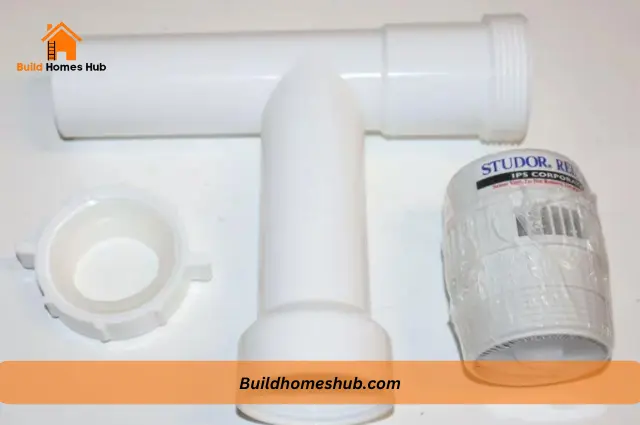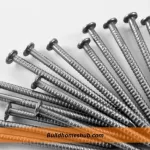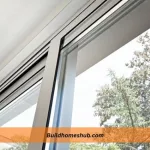We all want to feel confident in the safety and functionality of the various systems that make up our homes. One such system that often raises questions is the venting of plumbing fixtures, particularly the use of Studor vents or air admittance valves (AAVs). In this post, we’ll explore the safety aspects of Studor vents, how they work, their advantages and disadvantages, and even some installation tips. So, let’s get started and see if these modern venting solutions live up to their claims.
Understanding the Basics Studor Vents
Before we dive into the safety aspects of Studor vents, it’s essential to understand how they work and what they’re designed to do. Studor vents are a type of AAV that helps to regulate air pressure within a building’s drainage system. They are used to replace traditional vent pipes that extend through the roof, providing a more convenient and cost-effective solution for venting plumbing fixtures.
How Do Studor Vents Work?
The main purpose of a Studor vent is to allow air to enter the drainage system when needed, while preventing sewer gases from escaping into the living space. The vent achieves this through a one-way valve that opens to let air in when the pressure inside the drainpipe drops (e.g., when water flows down the drain). Once the pressure equalizes, the valve closes, effectively sealing off the vent and keeping sewer gases contained.
The Safety of Studor Vents: Debunking Myths and Misconceptions
Now that we understand the basic function of Studor vents let’s address the elephant in the room: are they safe? In a nutshell, yes, Studor vents are considered safe when properly installed and maintained. Here are some common concerns and misconceptions about Studor vents, along with the facts to set the record straight:
1. Myth: Studor Vents Can’t Handle High Pressure
Fact: Studor vents are designed to handle the pressure fluctuations commonly found in residential and commercial plumbing systems. They are tested and rated to perform under various pressure conditions, ensuring reliable and consistent operation.
2. Myth: Studor Vents Allow Sewer Gases to Escape
Fact: The one-way valve in a Studor vent is designed to prevent sewer gases from escaping into your living space. When properly installed and maintained, the valve should create a tight seal when closed, keeping those unpleasant odors at bay.
3. Myth: Studor Vents Are Prone to Failure
Fact: While no system is immune to failure, Studor vents have a proven track record of reliability. They are constructed from high-quality materials and designed to provide years of trouble-free service when properly installed and maintained.
Advantages and Disadvantages of Studor Vents
Like any product, Studor vents have their pros and cons. Let’s weigh the advantages and disadvantages to help you make an informed decision.
Advantages
- Easy Installation: Studor vents are simpler to install than traditional vent pipes, as they don’t require penetration through the roof.
- Space-Saving: With a compact design, Studor vents can fit in tight spaces where traditional venting solutions might not be feasible.
- Cost-Effective: The reduced installation complexity can save you money on labor and materials.
- Versatile: Studor vents can be used in both new construction and retrofit applications, making them suitable for a wide range of projects.
Disadvantages
- Maintenance Requirements: Although low-maintenance, Studor vents still require periodic inspection and cleaning to ensure proper operation.
- Potential for Freezing: In extremely cold climates, the valve in a Studor vent maybe susceptible to freezing, which can affect its performance. However, proper insulation and installation can help mitigate this issue.
- Limited Aesthetics: While Studor vents are compact and can be hidden in many cases, they may still be visible in some installations, which could be a drawback for homeowners who prefer a seamless look.
Installation Tips for Optimal Safety and Performance
To ensure the safety and effectiveness of your Studor vents, proper installation is crucial. Here are some tips to help you get the best results:
- Follow Manufacturer Guidelines: Always consult and adhere to the manufacturer’s instructions for installation, maintenance, and usage.
- Install in Accessible Locations: Position Studor vents in locations where they can be easily accessed for inspection, cleaning, and maintenance.
- Use Proper Support: Ensure the vent and the associated piping are adequately supported to prevent movement or stress on the connections.
- Protect Against Freezing: If you live in a cold climate, take measures to insulate your Studor vent and keep it from freezing during winter.
Conclusion
Studor vents, when properly installed and maintained, are a safe and effective alternative to traditional venting solutions. They provide a convenient and cost-effective way to regulate air pressure in your plumbing system while preventing sewer gases from entering your living space.
By understanding the facts about Studor vents, you can decide whether they’re the right choice for your home or building project. So, rest assured that with the right installation and maintenance, Studor vents can be a reliable and safe addition to your plumbing system.
I hope to help you make the right choices with my content. I am passionate about building new homes and renovations. Follow me, on my socials, I drop nice stuff that may be helpful.











